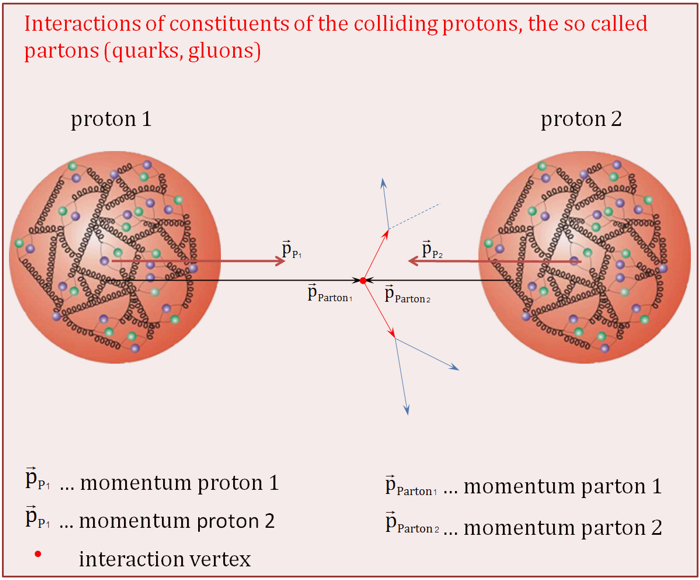W stien 3D
The LHC is the biggest and most powerful particle accelerator in the world. It was built to enter unknown terrain beyond the standard model. The reason is that there are still gaps in that same standard model, even with its great success in explaining the building blocks and forces of our universe and its predictions being in very good agreement with experimental data. The experiments at the LHC will provide answers to some open questions like how particles get their masses or why the universe has more matter than antimatter.
In order to get answers to these questions bunches of protons are brought to collision. But which objects interact during a proton-proton-collision? The constituents of the protons (gluons and/or quarks). You can get a picture of what is going on during a collision from the graphic below:

During the initial phase of LHC operations physicists kept their eyes peeled for each of the elementary particles of the standard model. All of them were successfully rediscovered within a few weeks, e.g. bounded systems of quarks and antiquarks (charmonium and bottonium, originally discovered in 1974 and 1977), unbounded heavy top quarks (first discovered in 1995) and W and Z Bosons (discovered at CERN in 1983). In order to reliably discover new particles in proton-proton collisions, it is necessary to show that one can spot known particles in LHC events unambiguously. This not only confirms previous results but also shows how already-known physics looks like in the new environment of the LHC detectors.
Thus the focus is on particles like the W-boson. Let's discuss what this exchange particle of the weak interaction is telling us about itself and how it appears in the ATLAS detector.